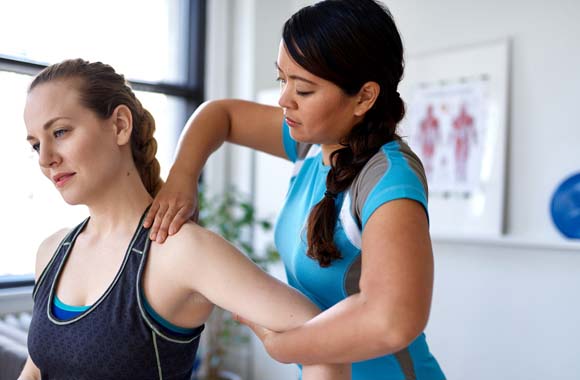Symptoms of Shoulder Instability
With shoulder instability, your pain may start suddenly or happen gradually over time. With a progressive onset of pain, you may only experience discomfort at certain times, such as when throwing a ball. Other symptoms include:
- Weakness in the arm
- Feeling that the shoulder is stuck in a certain position
- Numbness or tingling sensation
- Soreness upon movement
- Feeling of “looseness”
- Hearing a “pop” in the shoulder

Causes of Shoulder Instability
Shoulder instability can arise from a range of injuries, like getting hit in the shoulder, falling with an outstretched arm, or repetitive overuse of the ligaments and muscles. Most of the time, the reason for the instability derives from other injuries, such as:
- Shoulder dislocations
- Labral tears
- Rotator cuff tears
- AC dislocation
In particular, repetitive dislocations tend to lead to shoulder instability. However, there are also genetic conditions that may cause shoulder instability, such as hyperlaxity. Hyperlaxity is a part of your anatomy where the ligaments in your joints are naturally looser than normal. Sometimes, this looseness becomes exacerbated from repetitive overhead motions, like while playing volleyball or tennis.
Although occurring in less than 5% of cases, shoulder instability may also arise as a complication following a shoulder replacement surgery. This instability occurs when the prosthesis wears down, causing replacement implants to potentially dislocate.
Treatment Options for Shoulder Instability
Upon initial diagnosis of shoulder instability, the sports medicine team at Performance Sports Medicine Institute will often recommend non-surgical options, such as:
- Activity modification: to limit overhead motions
- NSAIDs: over-the-counter anti-inflammatory drugs like ibuprofen and aspirin to reduce pain and swelling
- Physical therapy: to strengthen the shoulder joint
- RICE: rest, ice, compression, and elevation
There are also numerous surgical options that may be necessary to treat shoulder instability, including:
- Rotator cuff repair: open repair, mini-open repair, or arthroscopic repair
- Shoulder replacement
- Bicep tendon surgery
- Labral repairs: SLAP repair or bankart repair
- Shoulder dislocation arthroscopy

